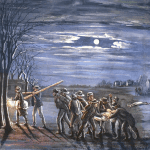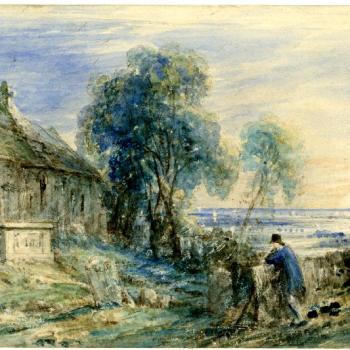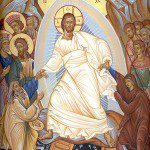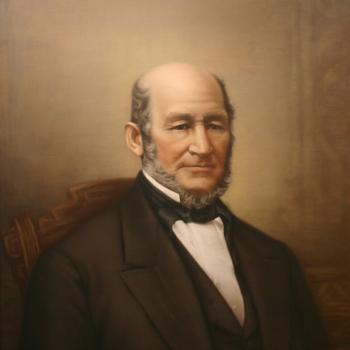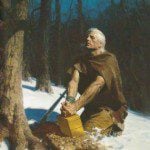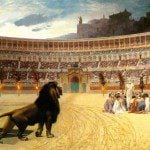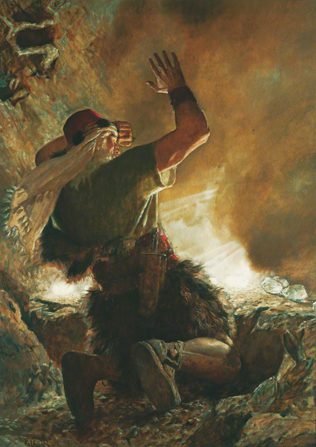
We spent much of today flying over the eastern portion of the Gulf of Australia (formerly known as the Pacific Ocean). Happily, the flight was boring and uneventful. Happily, too, the Interpreter Foundation continues to produce even while I’m strapped in at 37,000 feet. Actually, as a matter of fact, it performs better when I’m away from the controls.
Today being Friday, a new article went up early this afternoon: ““When Ye Shall Rend That Veil of Unbelief”: A Typological Reading of Ether 3 and 4,” written by Matthew Scott Stenson:
Abstract: In the book of Ether, the prophet Moroni “Christianizes” the Jaredite story, inserting extensive Christian elements into an original text that predates the house of Israel, the Nephite nation, and the Christian era. In this paper, a typological and intertextual method is used to show how Moroni uses the words of Christ in Ether 3 and 4 to exhort his Gentile readers to embrace the Nephite record when it is manifest to them that they might receive even greater things (divine truths). Specifically, Moroni uses the brief account of the brother of Jared atop Mount Shelem to illustrate how Gentiles may “rend the veil of unbelief” and gain perfect knowledge of all things ever revealed. As the Lord revealed his finger to the brother of Jared, so also the Book of Mormon, itself a portion of the word of the Lord, will come forth to try their faith. Those Gentiles who believe and come to know with perfectness of its truthfulness are positioned to lay hold of even greater things than these through Christ. The value of this reading is to clarify Moroni’s effort to adapt the early Jaredite history to a later event—the coming forth of the Book of Mormon and its implications.
And it was accompanied by “Interpreting Interpreter: A Christianized Ether,” which was written by Kyler Rasmussen:
This post is a summary of the article ““When Ye Shall Rend That Veil of Unbelief”: A Typological Reading of Ether 3 and 4” by Matthew Scott Stenson in Volume 64 of Interpreter: A Journal of Latter-day Saint Faith and Scholarship. All of the Interpreting Interpreter articles may be seen at https://interpreterfoundation.org/category/summaries/. An introduction to the Interpreting Interpreterseries is available at https://interpreterfoundation.org/interpreting-interpreter-on-abstracting-thought/.
A video introduction to this Interpreter article is now available on all of our social media channels, including on YouTube at https://youtube.com/shorts/pW4gIUV8GnY.
The Takeaway: Stenson suggests that Moroni framed Christ’s words in Ether 3 and 4 as a way of encouraging future Gentile readers to accept the Nephite record, as a way of showing that they were in a position to receive a greater understanding of Christ and his truths, much as a view of Christ’s finger allowed the brother of Jared to see Christ’s whole body.
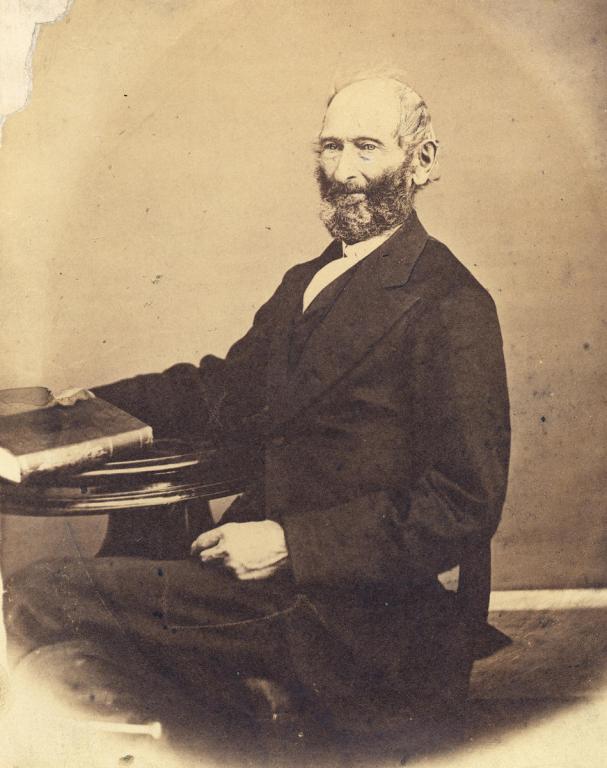
(Wikimedia Commons public domain photo)
From our series of short-video features on the Book of Mormon plates and related subjects: “Episode 31: John Whitmer and the Plates”:
Witnesses of the Book of Mormon—Insights Episode 31: John Whitmer was a practical, level-headed man. He was also one of the Eight Witnesses. And yet he eventually left the church along with the rest of his family. What did he actually say about his experience with the plates? This is Episode 31 of a series compiled from the many interviews conducted during the course of the Witnesses film project. . . These additional resources are hosted by Camrey Bagley Fox, who played Emma Smith in Witnesses, as she introduces and visits with a variety of experts. These individuals answer questions or address accusations against the witnesses, also helping viewers understand the context of the times in which the witnesses lived. This week we feature Daniel C. Peterson, President of the Interpreter Foundation and Executive Producer of Witnesses and Gerrit Dirkmaat, Associate Professor of Church History and Doctrine at Brigham Young University. For more information, go to https://witnessesofthebookofmormon.org/. Learn about the documentary movie Undaunted—Witnesses of the Book of Mormon at https://witnessesundaunted.com/.
Incidentally, you will continue to be able to access the docudrama Undaunted at no charge into the indefinite future. But — I’m not exactly sure how we’ve configured things — today may well be your very last day to stream Witnesses itself for free. It will continue to be available for a nominal charge, but the window for its free streaming was always slated to be a limited one. If you want to watch Witnesses for free, run (don’t walk) to The Witnesses Initiative, where you will find the appropriate links.

(Wikimedia Commons public domain photograph)
I was happy to see this article in National Review: “Utah Higher Ed Breakthrough”
“The Utah legislature is currently considering a bill (Senate Bill 334) that could jump-start a major reform of America’s higher education system. The bill, sponsored by Senator John Johnson, would require every student at Utah State University to take a full year-and-a-half course in Western civilization and an additional one-semester course in American civics.”
I strongly support this bill, and I consider Senator Johnson a friend. I should add, however, that I am in no way opposed to teaching non-Western civilizations at the collegiate level and even in high school. How could I be? After all, I earned my living for more than three decades at Brigham Young University teaching not only the Arabic language but, even more commonly, teaching about the religion of Islam, Islamic philosophical texts, Islamic art and architecture, and Islamic literature. I’m passionate about these subjects.
I remember one day, though, trying to make a point about Kalila wa-Dimna, the wonderful eighth-century collection of animal fables by Ibn al-Muqaffa’. Dimna, I said, was a seeming friend who is actually plotting to destroy a rival in the king’s court. (Appropriately enough, while the king in the story is a lion, Dimna is a jackal.) I compared him to the consummately villainous Iago, from Shakespeare’s tragedy Othello. When the students responded with uniformly blank looks, I asked whether anybody in that class of roughly seventy-five was familiar with Othello. To my shock, not a single person in the room (beside me) had read the play or even recognized the name Iago. I found that profoundly depressing, and I wondered why I was teaching these mostly American and Canadian students about Islamic culture when they had so much more to learn about their own.
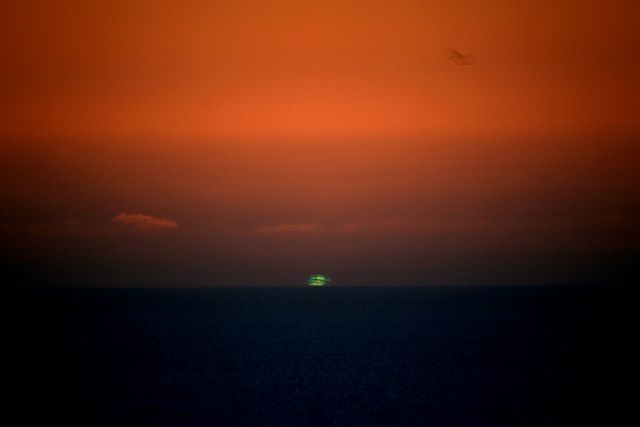
I could have seen it more often had I been paying more systematic attention, but I was pleased to see the “green flash” at sunset three evenings in a row while we were on Maui. I haven’t really seen it all that often in the past. Usually, of course, I’m in no position to watch the sun at the horizon but, when I have been, clouds have often interfered. The last three nights, though, we made a special effort — and I wasn’t disappointed.

(Wikimedia Commons public domain image)
This is really important, because the subject has been a major angle of attack against the Church of Jesus Christ of Latter-day Saints and its leaders over at least the past two or three years: “Stewardship of Tithing Funds: Recent Court Ruling Acknowledges Church Integrity”
Incidentally, here are some questions that should be asked: Would the Church be able to offer as much humanitarian assistance around the world as it does had it not carefully managed its funds over the past several decades? Would it be able to support Ensign College and Brigham Young University and BYU-Idaho and BYU-Hawaii and the international BYU Pathways program and all of the Latter-day Saint seminaries and institutes, if it didn’t have a large reserve fund? Would it be in a position to launch a new medical school if it hadn’t been a wise and prudent steward of the funds entrusted to it?
Posted from Oakland, California


